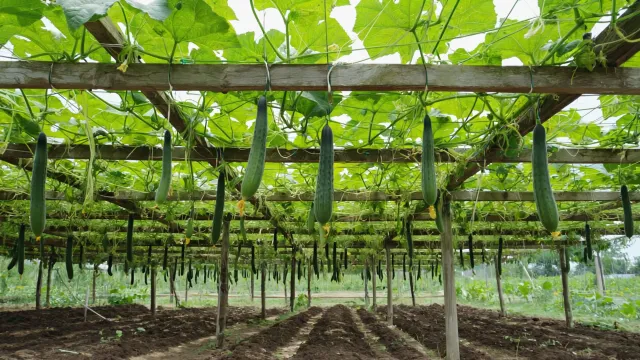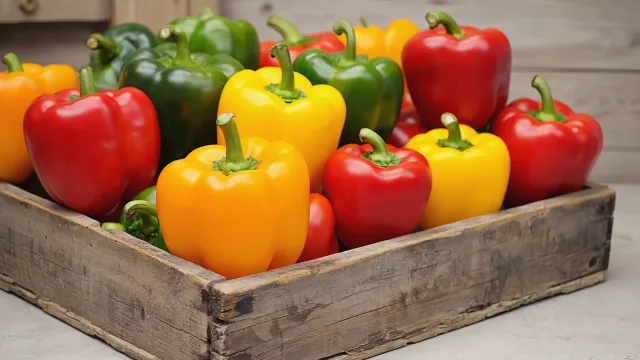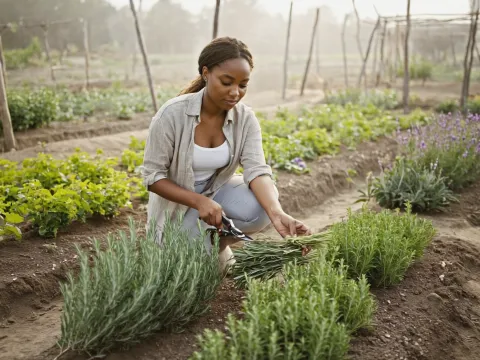Published on June 3, 2025
Last updated: June 3, 2025 · ⏱ 4 min read
Grow Fresh Chives Right in Your Kitchen

Introduction to Growing Chives Indoors
Chives are a delightful herb that can elevate your culinary creations with their mild onion flavor. Growing chives indoors is not only an excellent way to have fresh herbs at your fingertips, but it also allows you to enjoy gardening year-round, regardless of the season. Whether you are a seasoned chef or a home cook looking to add some flair to your dishes, cultivating chives in your kitchen can be a rewarding experience. This guide will walk you through everything you need to know to successfully grow chives indoors, from selecting the right supplies to care and maintenance.
Choosing the Right Container
The first step to growing chives indoors is selecting an appropriate container. Chives are relatively small plants, so you don’t need a large pot. A container that is at least 6-8 inches deep will suffice. Ensure that the pot has drainage holes at the bottom to prevent water from pooling, which can lead to root rot. You can opt for a traditional ceramic pot, a plastic container, or even a recycled item like a tin can. Just make sure to add a layer of stones or gravel at the bottom to enhance drainage.
Selecting the Right Soil
Soil plays a crucial role in the healthy growth of your chives. Look for a high-quality potting mix that is rich in organic matter. Chives thrive in soil that is well-draining yet retains some moisture. You can create your own mix by combining equal parts of potting soil, perlite, and compost. This combination will provide your chives with the nutrients they need while ensuring proper drainage. Avoid using garden soil, as it can be too dense and may contain pests or diseases that can harm your indoor plants.
Planting Chive Seeds or Transplants
Once you have your container and soil ready, it’s time to plant your chives. You can either start from seeds or purchase young chive plants from a nursery. If you choose to plant seeds, sprinkle them on the soil surface and lightly cover them with a thin layer of soil. Keep in mind that chive seeds are quite small, so a light touch is essential. If you prefer transplants, make a small hole in the soil and place the root ball of the chive plant into it. Gently pack the soil around the plant to secure it in place.
Providing Adequate Light
Chives require plenty of light to thrive. Ideally, they should receive at least 6 hours of bright, indirect sunlight each day. A south-facing window is often the best location for growing chives indoors. If your home lacks sufficient natural light, consider using grow lights. These artificial lights can provide the necessary spectrum for photosynthesis and can be set on a timer to ensure your plants receive consistent light exposure. Position the lights about 6-12 inches above the plants, adjusting as they grow taller.
Watering Your Chives
Proper watering is essential for the health of your chives. The soil should be kept moist but not soggy. Check the top inch of the soil; if it feels dry, it’s time to water. When you do water, do so thoroughly until you see excess water draining from the bottom of the pot. Avoid letting the pot sit in standing water, as this can lead to root rot. In general, watering once a week is sufficient, but this may vary based on your indoor climate and the size of the pot.
Fertilizing Your Chives
Chives benefit from regular feeding, especially if they are grown in containers where nutrients can be depleted quickly. Use a balanced, water-soluble fertilizer every 4-6 weeks during the growing season. Dilute the fertilizer to half-strength to avoid overwhelming the plants. You can also opt for organic fertilizers, such as compost tea or fish emulsion, which can provide essential nutrients while promoting healthy growth.
Pruning and Harvesting Chives
One of the joys of growing chives is harvesting them for use in your cooking. You can start harvesting chives once they are about 6 inches tall. Use sharp scissors to cut the green tops, leaving about 1-2 inches above the soil to encourage new growth. Regular harvesting not only provides fresh flavor for your meals but also promotes a bushier plant. Be cautious not to cut more than one-third of the plant at a time to ensure it continues to thrive.
Common Pests and Problems
While chives are generally hardy, they can be susceptible to certain pests and diseases. Aphids and spider mites are common pests that can affect chives. Regularly inspect your plants for signs of infestation, such as webbing or sticky residue. If you notice any pests, spray the leaves with a mixture of water and mild soap to help eliminate them. Additionally, chives can suffer from fungal issues if overwatered or if there isn’t enough airflow around the plant. Ensure good air circulation and avoid watering the leaves to minimize these risks.
Creating the Ideal Indoor Environment
The ideal indoor environment for growing chives includes a stable temperature and humidity level. Chives prefer temperatures between 60°F to 70°F. Avoid placing them near drafts, heating vents, or air conditioning units that can cause temperature fluctuations. If your indoor air is particularly dry, consider using a humidifier or placing a tray of water near the plants to increase humidity. This will help your chives thrive and ensure they remain healthy throughout their growing cycle.
Enjoying the Benefits of Indoor Chives
Growing chives indoors is both practical and rewarding. These hardy herbs thrive in small pots on sunny windowsills and require minimal maintenance. With their mild onion flavor, chives are perfect for garnishing soups, salads, and omelets. Plus, regularly snipping the leaves encourages new growth, giving you a continuous supply of fresh greens right from your kitchen.

Written by Soufyan from GrowToGrub
Soufyan is a gardening educator and founder of GrowToGrub. Through simple guides, easy recipes, and practical life hacks, he helps everyday growers turn small spaces into sustainable, delicious, and chemical-free living.


